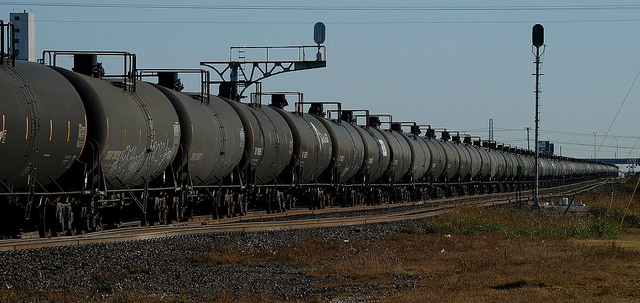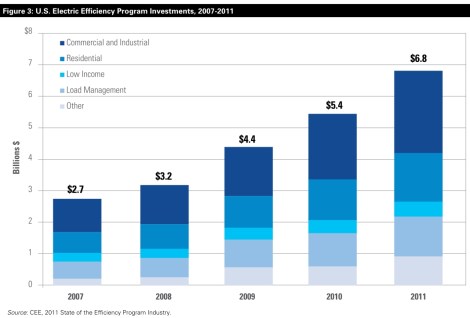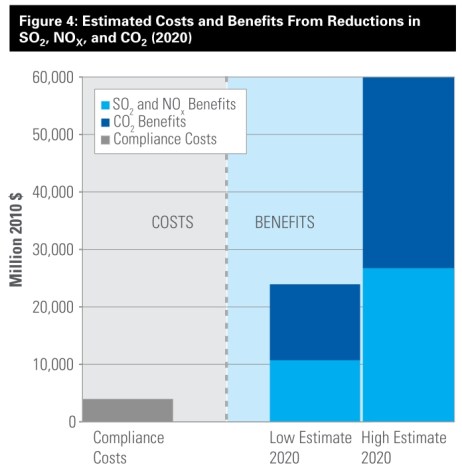
Shutterstock / White House
It is still possible for Barack Obama to secure an honorable climate legacy. He can dramatically reduce U.S. carbon emissions in his second term. And he can do it without help from Congress. He doesn’t even need a crafty new plan — the Natural Resources Defense Council has come up with one for him, based on a provision in the Clean Air Act (CAA). All he needs is political courage.
Explaining how and why it would work requires a little background.
In 2007, the Supreme Court ruled that the CAA could cover carbon emissions if they were deemed a threat to public heath. In 2009, EPA determined that they are such a threat. At that point, a cascading series of legal obligations (and battles) kicked in.
First, EPA was required to regulate “mobile sources” of carbon, i.e., vehicles. It has done part of that: In August, the administration finalized its historic fuel-efficiency standards for new vehicles.
Note, however, that EPA’s standards only apply to new vehicles. If EPA is obligated to regulate mobile sources, what about all those existing mobile sources? What about the cars, trucks, motorcycles, boats, and so on that are already operating, contributing some 27 percent of total U.S. carbon emissions? On those, EPA has not acted.
The Institute for Policy Integrity is suing EPA over this, arguing that the agency should impose a declining cap on carbon emissions from the vehicle sector — a cap-and-trade system for transportation, effectively, established under Sections 211 and 231 of the Clean Air Act. I like that idea in theory, but it is a long shot, to say the least.
A parallel and somewhat more plausible opportunity can be found in EPA’s second legal obligation: to regulate “stationary sources” of carbon, most notably power plants, which are responsible for some 2.4 billion tons of CO2 annually — about 40 percent of total U.S. emissions.
Regulation of stationary sources is covered in Section 111 of the CAA. Unlike in the case of mobile sources, however, there is a provision in 111 specifically devoted to regulation of existing sources: 111(d). This is distinct from 111(b), which covers new sources. I explained the crucial difference in some detail in this post, for those of you into that kind of thing.
EPA has issued regulations under 111(b) for new power plants, but it has not yet issued regulations under 111(d) for existing plants.
This chance to spur decarbonization in the power sector is Obama’s greatest second-term opportunity on climate change. How EPA designs and implements these rules will help define his legacy. There is nothing else with as much potential that does not require the imprimatur of intransigent minorities in Congress.
Now a smart and well-timed new proposal from NRDC shows how those regulations can be done right: effective on emissions, sensitive to differences among states and regions, and with benefits far in excess of costs.
Make no mistake, EPA is aware how big a flashpoint these regulations are going to be, and it’s nervous. Unlike the new-source standards — which merely ratified a market reality — existing-source standards really will (or could) drive change in the power sector. It might not be a “war on coal,” but it would have the effect of actively phasing coal-fired power out of the system. It needs to be done with a delicate hand, to say the least.
The genius of NRDC’s proposal is that it solves the most difficult dilemma facing the agency when it comes to stationary-source regulations.
The new-source rules issued by the agency last year …
… would require that new plants emit no more than 1000 pounds of CO2 per megawatt-hour (lbs/MWh). To put that in context, coal power plants typically produce about 2100 lbs/MWh, while natural gas-fired plants emit 1000/MWh or less. Power companies building new facilities could thus meet the standard with existing natural gas power plant technologies, zero-emitting renewables, or with efficient coal plants equipped with systems to capture and sequester carbon dioxide.
Since coal plants with carbon sequestration are a fairy tale, at least for the foreseeable future, this effectively prohibits new coal plants in the U.S.
Now, new coal plants were unlikely to be built in the U.S. regardless. They just aren’t economic any more, given pressure from cheap natural gas, renewables, and efficiency. So EPA’s carbon regulations amount to mandating something that many utility executives already see as inevitable. The rules mainly serve as a backstop in case natural gas prices rise sharply in the short- to mid-term, which most analysts don’t expect.
But what about all the dirty coal plants already running, the ones emitting 2100 lbs/MWh of CO2? There, EPA faces a dilemma. When it comes to interpreting 111(d) for carbon, the choice appears either a firecracker or a nuke.
The thing about a conventional coal power plant is, there’s not much it can do to reduce its carbon emissions. There are efficiency measures — modern boilers and the like — that can push emissions down at the margins, but nothing that can get such a plant anywhere close to 1000 lbs/MWh. Coal just is carbon. If a power plant wants to meet any serious carbon standard, it has to burn less coal. That’s done by “fuel-switching” to natural gas or some kind of coal-biomass mix, which is a substantial investment and, for many, many coal plants, won’t be worth it. They’ll shut down instead.
As long as the unit of regulation is the individual power plant, EPA 111(d) regulations will either be so mild as to be meaningless (efficiency upgrades) or so severe as to shut down most of the coal fleet at a stroke and produce untenable economic and political blowback (fuel switching, CCS). A firecracker or a nuke.
NRDC’s proposal solves this dilemma by making a state’s power fleet the unit of regulation. Rather than each power plant having to meet the standard, a state’s utilities have to keep their fleet averages at or below the standard. (Just as automakers don’t have to hit fuel-efficiency targets with every car or truck, only for their fleet averages.)
That immediately expands the range of compliance tools available to utilities. They can buy efficient boilers for some plants; they can shift generation from their coal fleet to their natural gas fleet; they can build out renewables; they can expand cogeneration and waste-heat capture; and they can reduce demand through energy efficiency. All these things can add up to a steady decrease in the fleet average CO2 lbs/MWh.
Here’s an illustrative example of how it could look:
The fact that energy efficiency counts as compliance is crucial to the economics of NRDC’s proposal. If avoided carbon counts toward reducing average fleet emissions, then every utility, in every state and region, has access to inexpensive compliance measures. Efficiency is ubiquitous and in almost every case cheaper than new power sources. This is something utilities are already catching on to, as evidenced by the surge in efficiency investments over the last few years:
Remember: Efficiency saves ratepayers money. According to modeling of the NRDC proposal done by ICF International, by complying through efficiency measures, utilities could achieve the proposed carbon standards while slightly reducing power bills. And every dollar not spent on power is a dollar of annual economic stimulus.
Another advantage of NRDC’s proposal is that there’s no one-size-fits-all standard. Standards are established state-by-state, based on each state’s baseline (2008-2010) mix of coal and natural gas plants. (There’s a formula, but I won’t burden you with it.) This means every state will face roughly equal incentive to push carbon out of its power system, no matter what level it begins with. No state will be unfairly penalized for having a carbon-intensive fleet today.
States could also propose their own carbon reduction systems, like the Regional Greenhouse Gas Initiative in Northeast states, as long as they make equivalent reductions.
So there’s enormous flexibility in this system, reminiscent of another policy that rhymes with frap-and-frade but shall never be mentioned in polite society.
ICF’s modeling shows that these flexible compliance options would yield “a 26 percent reduction in emissions of climate-change-causing CO2 emissions from existing power plants by 2020 compared to 2005 levels (or equivalently, a 17 percent reduction compared to 2011 levels).”
That amounts to a 10 percent reduction in total U.S. carbon emissions by 2020, through a stroke of Obama’s pen. Combined with reductions from mobile sources, that could help the U.S. hit the goal Obama pledged at the 2009 Copenhagen climate talks: 17 percent cuts from 2005 levels by 2020.
Best of all, even the lowest estimate of benefits wildly outweighs the compliance costs:
Here’s how NRDC breaks it down:
The benefits of the proposal far outweigh the costs. Carbon dioxide from power plants contributes to the severity of heat waves, droughts, floods and rising sea levels, all of which bring an enormous toll in human lives, devastation and economic disruption. The value of reducing carbon pollution is estimated at $25 to $59 per ton, or more. The proposal also brings cuts in emissions of traditional pollutants like sulfur and nitrogen oxides spewing from power plants beyond what current regulations would achieve. The emissions reductions delivered by implementing the proposal would prevent more than 23,000 asthma attacks, avoid more than 2,300 emergency room visits and hospital admissions per year and prevent thousands of premature deaths.
The benefits of reducing CO2 and the traditional pollutants are both substantial, and add up to $25 to $60 billion. That’s 6 to 15 times higher than the costs of complying with the proposal.
The reason NRDC’s approach works so well is that it’s performance-focused, not technology-focused. It sets a carbon-intensity goal, but does not dictate how to meet the goal. It allows for states to customize their approaches but provides for gradual, predictable decline in carbon.
So there you have it. Here is a tool that
- is already in Obama’s toolbox;
- does not require any action by Congress;
- reduces U.S. emissions by 10 percent by 2020; and
- has the net effect of stimulating the economy through lower power bills and better health.
Will Obama seize this extraordinary opportunity? Whether he does will determine whether he goes down in history as a climate champion or someone who, despite lofty rhetoric, fiddled at the margins while Rome burned.







